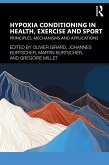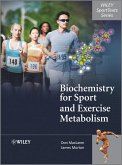This cutting-edge book examines how positive physiological adaptations not only acutely enhance tolerance to hypoxia but can also induce sustained health benefits. This has enabled the development and refinement of approaches utilizing hypoxia, strategies also termed hypoxia conditioning, to improve health and performance outcomes.
By linking research with recommendations for real-world situations, this volume will serve as an invaluable resource for students, academics, exercise science professionals and sports medicine specialists, especially those in environmental physiology and coaching subjects.
Dieser Download kann aus rechtlichen Gründen nur mit Rechnungsadresse in A, B, BG, CY, CZ, D, DK, EW, E, FIN, F, GR, HR, H, IRL, I, LT, L, LR, M, NL, PL, P, R, S, SLO, SK ausgeliefert werden.
Louise Deldicque, Professor in Exercise Physiology and Sport Nutrition at UCLouvain, Belgium









